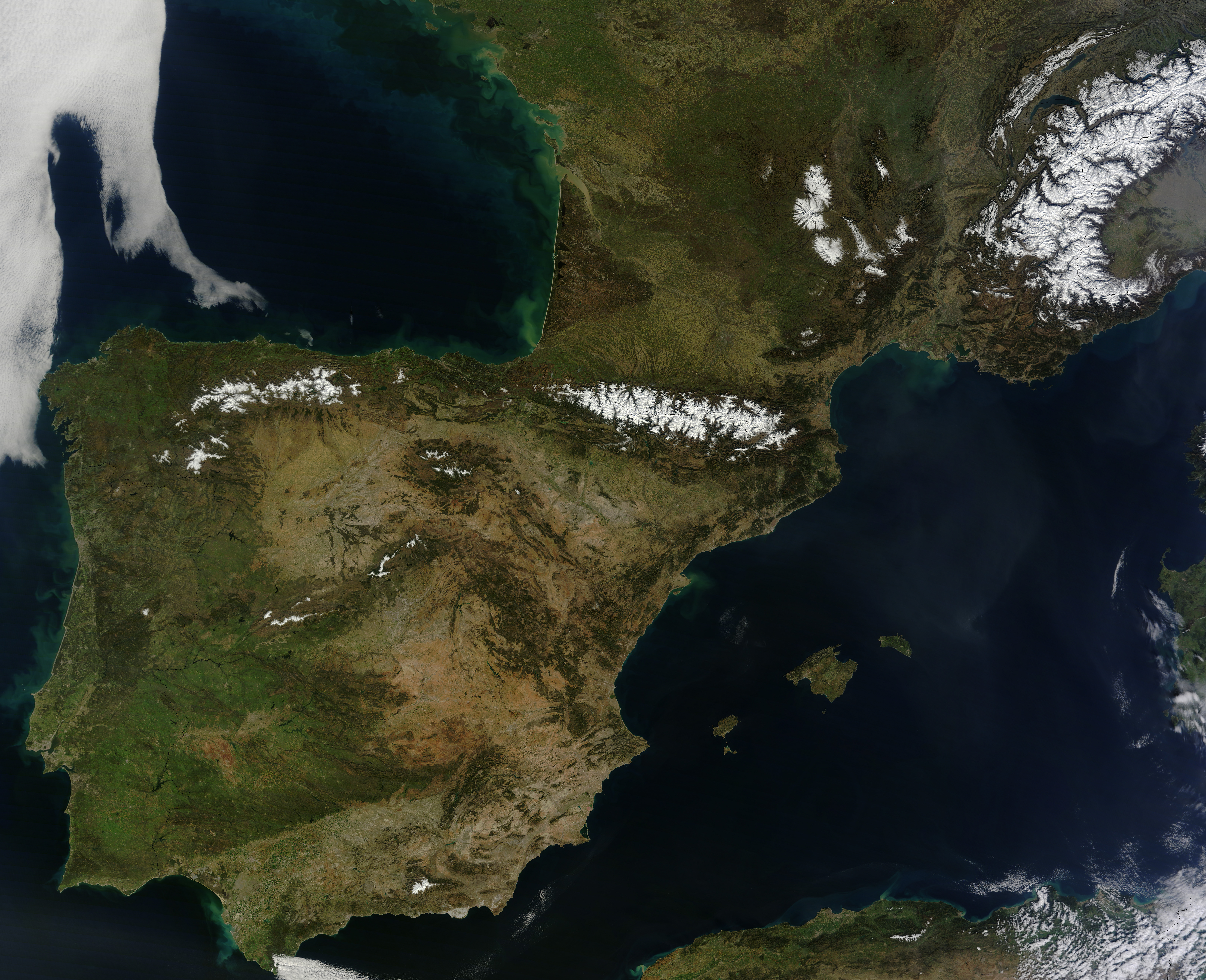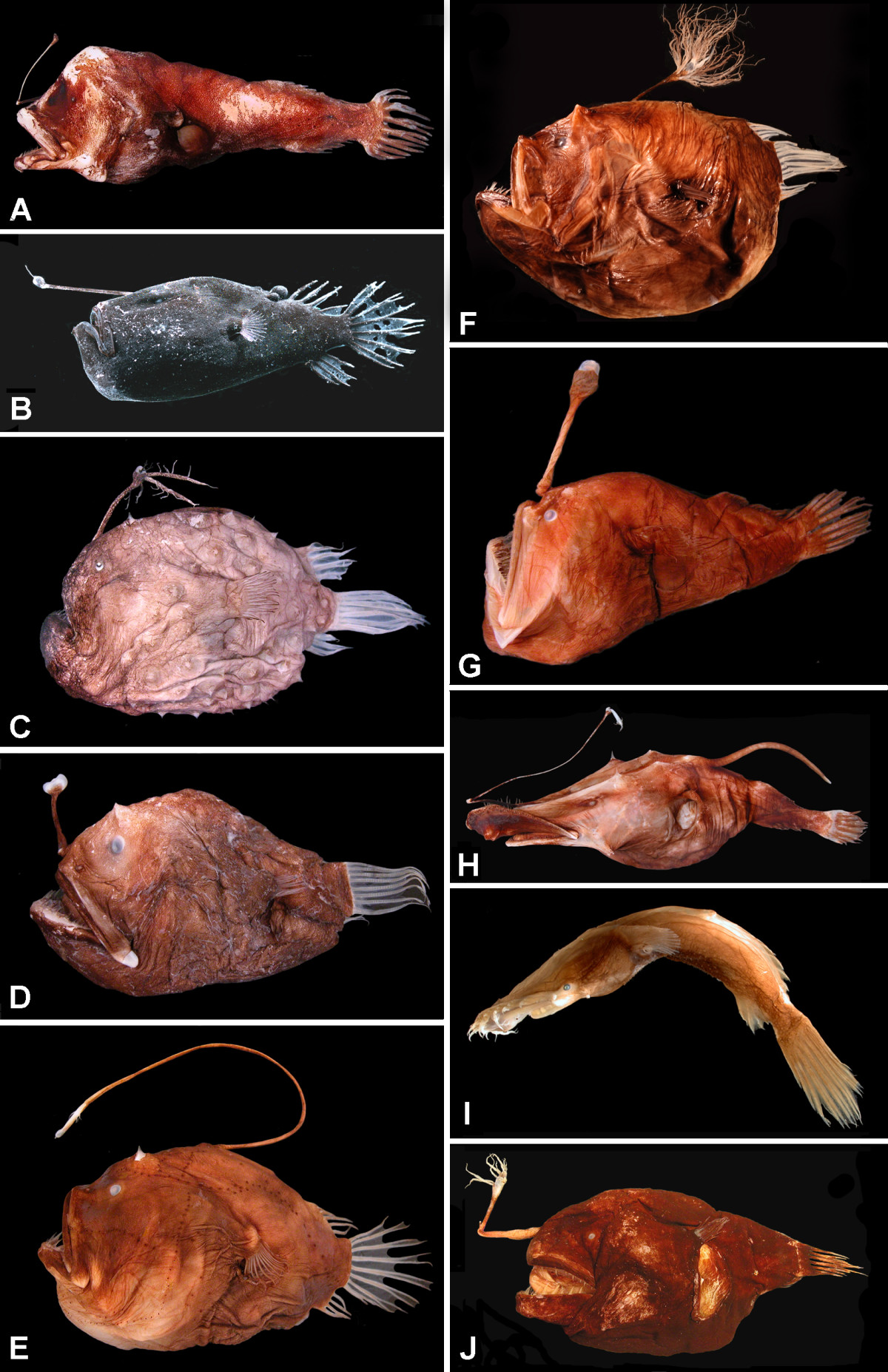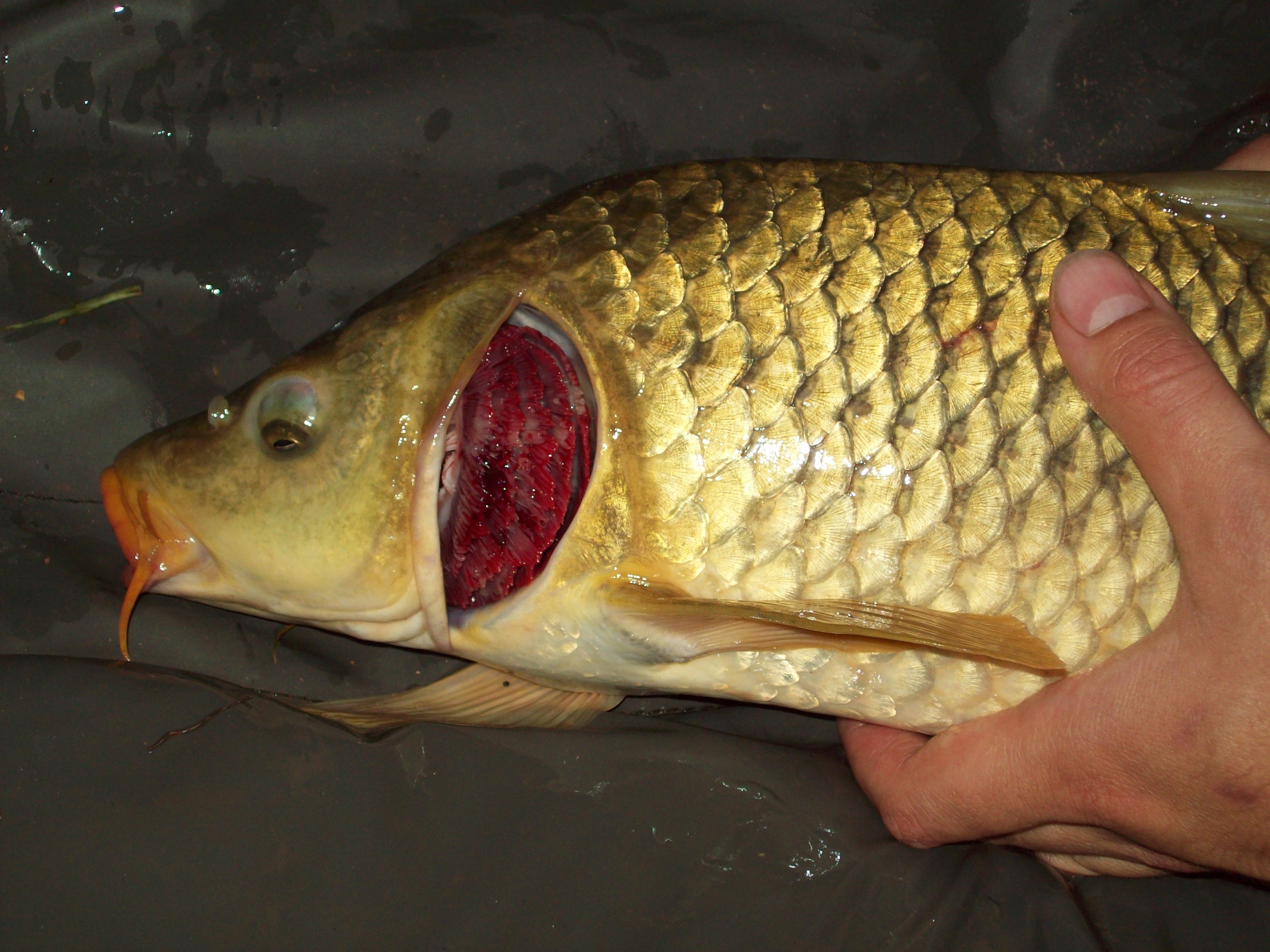|
Chaunax Pictus
The pink frogmouth (''Chaunax pictus''), or redeye, pink gaper or uniform gaper, is a species of marine ray-finned fish belonging to the family Chaunacidae, the sea toads. This species is found in the Atlantic Ocean. Taxonomy The pink frogmouth was first formally described in 1846 by the Englaih naturalist Richard Thomas Lowe with its type locality given as Picos, west of Funchal off Madeira. When Lowe described the species he classified it in the new genus '' Chaunax'', making the pink frogmouth the type species of ''Chaunax'' by monotypy. Within the genus ''Chaunax'' this species is placed in the ''Chaunax pictus'' species group. The genus ''Chaunax'' is one of two genera classified by the 5th edition of the ''Fishes of the World'' within the family Chaunacidae, the sea toads. The sea toads are placed within the monotypic suborder Chaunacoidei within the anglerfish order Lophiiformes. Etymology The pink frogmouth is classified in the genus ''Chaunax'' which means "one who ... [...More Info...] [...Related Items...] OR: [Wikipedia] [Google] [Baidu] |
Richard Thomas Lowe
Richard Thomas Lowe (1802–1874) was an English scientist, a botanist, ichthyologist, malacologist, and a clergyman. In 1825 he graduated from Christ's College, Cambridge, and in the same year he took holy orders. In 1832 he became a clergyman in the Madeira Islands, where he was also a part-time naturalist, extensively studying the local flora and fauna. He wrote a book on the Madeiran flora. He died in 1874 when the ship he was on was wrecked off the Isles of Scilly. Taxa Lowe named and described numerous molluscan taxa, including: * ''Caseolus'', a land snail genus and eight species within it * ''Lemniscia ''Lemniscia'' is a genus of air-breathing land snails, terrestrial pulmonate gastropod mollusks in the family Geomitridae Geomitridae is a Taxonomy (biology), taxonomic Family (biology), family of small to medium-sized air-breathing land sna ...'', a land snail genus and two species within it See also * :Taxa named by Richard Thomas Lowe References * Notes ... [...More Info...] [...Related Items...] OR: [Wikipedia] [Google] [Baidu] |
Chaunacoidei
The sea toads and coffinfishes are a family of deep-sea anglerfishes known as the Chaunacidae. These are bottom-dwelling fishes found on the continental slopes of the Atlantic, Indian, and Pacific Oceans, at depths to at least . There have also been findings of deep-sea anglerfishes off the coasts of Australia and New Caledonia. Other findings suggest some genera of Chaunacidae are found near volcanic slopes encrusted with manganese. Of the two genera in the family, ''Chaunacops'' typically occurs at deeper depths than '' Chaunax'', but with considerable overlap. They have large, globose bodies and short, compressed tails, and are covered with small, spiny scales. The largest are about in length. During their gill ventilatory cycle, ''Chaunacidae'' are able to take in high volumes of water, increasing their total body volume by 30%. The first dorsal fin ray is modified into a short bioluminescent Bioluminescence is the production and emission of light by living organisms ... [...More Info...] [...Related Items...] OR: [Wikipedia] [Google] [Baidu] |
Iberian Peninsula
The Iberian Peninsula (), ** * Aragonese and Occitan: ''Peninsula Iberica'' ** ** * french: Péninsule Ibérique * mwl, Península Eibérica * eu, Iberiar penintsula also known as Iberia, is a peninsula in southwestern Europe, defining the westernmost edge of Eurasia. It is principally divided between Spain and Portugal, comprising most of their territory, as well as a small area of Southern France, Andorra, and Gibraltar. With an area of approximately , and a population of roughly 53 million, it is the second largest European peninsula by area, after the Scandinavian Peninsula. Name Greek name The word ''Iberia'' is a noun adapted from the Latin word "Hiberia" originating in the Ancient Greek word Ἰβηρία ('), used by Greek geographers under the rule of the Roman Empire to refer to what is known today in English as the Iberian Peninsula. At that time, the name did not describe a single geographical entity or a distinct population; the same name was ... [...More Info...] [...Related Items...] OR: [Wikipedia] [Google] [Baidu] |
Total Length
Fish measurement is the measuring of individual fish and various parts of their anatomies. These data are used in many areas of ichthyology, including taxonomy and fisheries biology. Overall length * Standard length (SL) is the length of a fish measured from the tip of the snout to the posterior end of the last vertebra or to the posterior end of the midlateral portion of the hypural plate. Simply put, this measurement excludes the length of the caudal (tail) fin. * Total length (TL) is the length of a fish measured from the tip of the snout to the tip of the longer lobe of the caudal fin, usually measured with the lobes compressed along the midline. It is a straight-line measure, not measured over the curve of the body. Standard length measurements are used with Teleostei (most bony fish), while total length measurements are used with Myxini ( hagfish), Petromyzontiformes ( lampreys), and (usually) Elasmobranchii (sharks and rays), as well as some other fishes. Total leng ... [...More Info...] [...Related Items...] OR: [Wikipedia] [Google] [Baidu] |
Smithsonian Tropical Research Institute
The Smithsonian Tropical Research Institute (STRI, es, Instituto Smithsonian de Investigaciones Tropicales) is located in Panama and is the only bureau of the Smithsonian Institution based outside of the United States. It is dedicated to understanding the past, present, and future of tropical ecosystems and their relevance to human welfare. STRI grew out of a small field station established in 1923 on Barro Colorado Island in the Panama Canal Zone to become one of the world's leading tropical research organizations. STRI's facilities provide for long-term ecological studies in the tropics and are used by some 1,200 visiting scientists from academic and research institutions around the world every year. History Smithsonian scientists first came to Panama during the construction of the Panama Canal from 1904 to 1914. The Secretary of the Smithsonian Institution, Charles Doolittle Walcott, reached an agreement with Federico Boyd to conduct a biological inventory of the new Canal ... [...More Info...] [...Related Items...] OR: [Wikipedia] [Google] [Baidu] |
Anal Fin
Fins are distinctive anatomical features composed of bony spines or rays protruding from the body of a fish. They are covered with skin and joined together either in a webbed fashion, as seen in most bony fish, or similar to a flipper, as seen in sharks. Apart from the tail or caudal fin, fish fins have no direct connection with the spine and are supported only by muscles. Their principal function is to help the fish swim. Fins located in different places on the fish serve different purposes such as moving forward, turning, keeping an upright position or stopping. Most fish use fins when swimming, flying fish use pectoral fins for gliding, and frogfish use them for crawling. Fins can also be used for other purposes; male sharks and mosquitofish use a modified fin to deliver sperm, thresher sharks use their caudal fin to stun prey, reef stonefish have spines in their dorsal fins that inject venom, anglerfish use the first spine of their dorsal fin like a fishing rod to ... [...More Info...] [...Related Items...] OR: [Wikipedia] [Google] [Baidu] |
Dorsal Fin
A dorsal fin is a fin located on the back of most marine and freshwater vertebrates within various taxa of the animal kingdom. Many species of animals possessing dorsal fins are not particularly closely related to each other, though through convergent evolution they have independently evolved external superficial fish-like body plans adapted to their marine environments, including most numerously fish, but also mammals such as cetaceans ( whales, dolphins, and porpoises), and even extinct ancient marine reptiles such as various known species of ichthyosaurs. Most species have only one dorsal fin, but some have two or three. Wildlife biologists often use the distinctive nicks and wear patterns which develop on the dorsal fins of large cetaceans to identify individuals in the field. The bony or cartilaginous bones that support the base of the dorsal fin in fish are called ''pterygiophores''. Functions The main purpose of the dorsal fin is to stabilize the animal against r ... [...More Info...] [...Related Items...] OR: [Wikipedia] [Google] [Baidu] |
Esca (fish Anatomy)
The anglerfish are fish of the teleost order Lophiiformes (). They are bony fish named for their characteristic mode of predation, in which a modified luminescent fin ray (the esca or illicium) acts as a lure for other fish. The luminescence comes from symbiotic bacteria, which are thought to be acquired from seawater, that dwell in and around the sea. Some anglerfish are notable for extreme sexual dimorphism and sexual symbiosis of the small male with the much larger female, seen in the suborder Ceratioidei, the deep sea anglerfish. In these species, males may be several orders of magnitude smaller than females. Anglerfish occur worldwide. Some are pelagic (dwelling away from the sea floor), while others are benthic (dwelling close to the sea floor). Some live in the deep sea (such as the Ceratiidae), while others on the continental shelf, such as the frogfishes and the Lophiidae (monkfish or goosefish). Pelagic forms are most often laterally compressed, whereas the ben ... [...More Info...] [...Related Items...] OR: [Wikipedia] [Google] [Baidu] |
Gill
A gill () is a respiratory organ that many aquatic organisms use to extract dissolved oxygen from water and to excrete carbon dioxide. The gills of some species, such as hermit crabs, have adapted to allow respiration on land provided they are kept moist. The microscopic structure of a gill presents a large surface area to the external environment. Branchia (pl. branchiae) is the zoologists' name for gills (from Ancient Greek ). With the exception of some aquatic insects, the filaments and lamellae (folds) contain blood or coelomic fluid, from which gases are exchanged through the thin walls. The blood carries oxygen to other parts of the body. Carbon dioxide passes from the blood through the thin gill tissue into the water. Gills or gill-like organs, located in different parts of the body, are found in various groups of aquatic animals, including mollusks, crustaceans, insects, fish, and amphibians. Semiterrestrial marine animals such as crabs and mudskippers have gill ch ... [...More Info...] [...Related Items...] OR: [Wikipedia] [Google] [Baidu] |
Caudal Fin
Fins are distinctive anatomical features composed of bony spines or rays protruding from the body of a fish. They are covered with skin and joined together either in a webbed fashion, as seen in most bony fish, or similar to a flipper, as seen in sharks. Apart from the tail or caudal fin, fish fins have no direct connection with the spine and are supported only by muscles. Their principal function is to help the fish swim. Fins located in different places on the fish serve different purposes such as moving forward, turning, keeping an upright position or stopping. Most fish use fins when swimming, flying fish use pectoral fins for gliding, and frogfish use them for crawling. Fins can also be used for other purposes; male sharks and mosquitofish use a modified fin to deliver sperm, thresher sharks use their caudal fin to stun prey, reef stonefish have spines in their dorsal fins that inject venom, anglerfish use the first spine of their dorsal fin like a fishing rod to ... [...More Info...] [...Related Items...] OR: [Wikipedia] [Google] [Baidu] |
Specific Name (zoology)
In zoological nomenclature, the specific name (also specific epithet or species epithet) is the second part (the second name) within the scientific name of a species (a binomen). The first part of the name of a species is the name of the genus or the generic name. The rules and regulations governing the giving of a new species name are explained in the article species description. For example, the scientific name for humans is ''Homo sapiens'', which is the species name, consisting of two names: ''Homo'' is the " generic name" (the name of the genus) and ''sapiens'' is the "specific name". Historically, ''specific name'' referred to the combination of what are now called the generic and specific names. Carl Linnaeus, who formalized binomial nomenclature, made explicit distinctions between specific, generic, and trivial names. The generic name was that of the genus, the first in the binomial, the trivial name was the second name in the binomial, and the specific the proper term fo ... [...More Info...] [...Related Items...] OR: [Wikipedia] [Google] [Baidu] |




.png)


